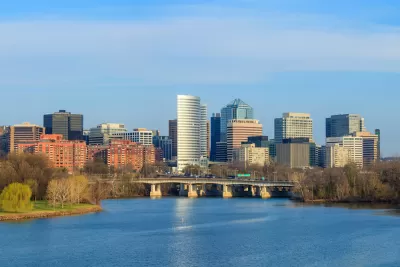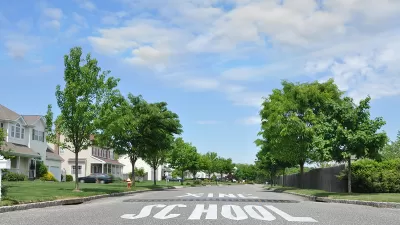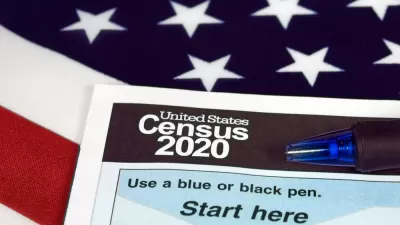Newly released population data provides entre for a discussion about the nature of cities.

Following on this week's big reveal of the updated U.S. Census population estimates for 2014, Jed Kolko digs into the data to reveal a trait common on among many of the country's fastest growing "cities": they're actually more like suburbs. In fact, according to Kolko's analysis, three of the ten largest cities in the country are actually more suburban than urban (viz., Phoenix, San Antonio, and San Diego).
Kolko notes that a lack of a clear distinction between suburban and urban lends ambiguity to the Census population data. To place the findings in a more useful context, Kolko uses a definition reached by a survey performed by Trulia.
"Our analysis showed that the single best predictor of whether someone said his or her area was urban, suburban or rural was ZIP code density. Residents of ZIP codes with more than 2,213 households per square mile typically described their area as urban. Residents of neighborhoods with 102 to 2,213 households per square mile typically called their area suburban. In ZIP codes with fewer than 102 households per square mile, residents typically said they lived in a rural area.2 The density cutoff we found between urban and suburban — 2,213 households per square mile — is roughly equal to the density of ZIP codes 22046 (Falls Church in Northern Virginia); 91367 (Woodland Hills in California’s San Fernando Valley); and 07666 (Teaneck, New Jersey)."
From this analysis comes a few interesting conclusions, such as a case for the uniquely urban qualities of New York and the surprisingly urban qualities of Los Angeles. Also, many of the fastest growing cities in the country are surprisingly suburban. According to Kolko, "[a]mong the 10 fastest-growing cities with more than 500,000 people, five — Austin, Fort Worth, Charlotte, San Antonio and Phoenix — are majority suburban, and a sixth, Las Vegas, is only 50 percent urban. Only one of the 10 fastest-growing, Seattle, is at least 90 percent urban."
FULL STORY: How Suburban Are Big American Cities?

Alabama: Trump Terminates Settlements for Black Communities Harmed By Raw Sewage
Trump deemed the landmark civil rights agreement “illegal DEI and environmental justice policy.”

Study: Maui’s Plan to Convert Vacation Rentals to Long-Term Housing Could Cause Nearly $1 Billion Economic Loss
The plan would reduce visitor accommodation by 25% resulting in 1,900 jobs lost.

Why Should We Subsidize Public Transportation?
Many public transit agencies face financial stress due to rising costs, declining fare revenue, and declining subsidies. Transit advocates must provide a strong business case for increasing public transit funding.

Paris Bike Boom Leads to Steep Drop in Air Pollution
The French city’s air quality has improved dramatically in the past 20 years, coinciding with a growth in cycling.

Why Housing Costs More to Build in California Than in Texas
Hard costs like labor and materials combined with ‘soft’ costs such as permitting make building in the San Francisco Bay Area almost three times as costly as in Texas cities.

San Diego County Sees a Rise in Urban Coyotes
San Diego County experiences a rise in urban coyotes, as sightings become prevalent throughout its urban neighbourhoods and surrounding areas.
Urban Design for Planners 1: Software Tools
This six-course series explores essential urban design concepts using open source software and equips planners with the tools they need to participate fully in the urban design process.
Planning for Universal Design
Learn the tools for implementing Universal Design in planning regulations.
Smith Gee Studio
Alamo Area Metropolitan Planning Organization
City of Santa Clarita
Institute for Housing and Urban Development Studies (IHS)
City of Grandview
Harvard GSD Executive Education
Toledo-Lucas County Plan Commissions
Salt Lake City
NYU Wagner Graduate School of Public Service





























